Unlike traditional currencies, digital assets are not stored in a bank account. Instead, a special wallet for cryptocurrencies is used. Today, we will talk about cold wallets. What is a cold wallet crypto, and why are such wallets so popular?
Cold wallets, or cold storage solutions, provide a robust way to protect cryptocurrencies by keeping them offline and away from online threats.
In contrast to hot wallets, which are connected to the web, cold wallets offer superior security for asset storage. Notable examples comprise hardware wallets like Trezor and Ledger Nano S, as well as paper wallets, which involve storing keys and addresses on physical media.
For business owners navigating the crypto realm, establishing a cold wallet strategy is crucial. It not only shields assets from cyberattacks but also builds trust with clients and investors by showcasing a dedication to security.
In our “What are cold wallets” guide, you will explore everything you need to understand about cold wallets for cryptocurrency!
What is a cold wallet crypto solution?
We will start with the cold wallet meaning. A crypto cold wallet, often referred to as cold storage, is a method of securely storing cryptocurrencies offline, significantly reducing the risk of hacking and online attacks.
You may have also heard of hot wallets. What is a hot wallet crypto? This wallet is a cryptocurrency wallet that remains connected to the internet, providing users with fast and convenient access to their digital assets.
In contrast to hot wallets, which are linked to the web, cold wallets keep private keys and sensitive data entirely offline for enhanced security. This approach greatly improves security by minimizing the chances of unauthorized access.
Hot and cold wallets are both popular options for storing cryptocurrencies, but they differ in their benefits and drawbacks. Below, you can see a brief overview of a hot wallet vs cold wallet.
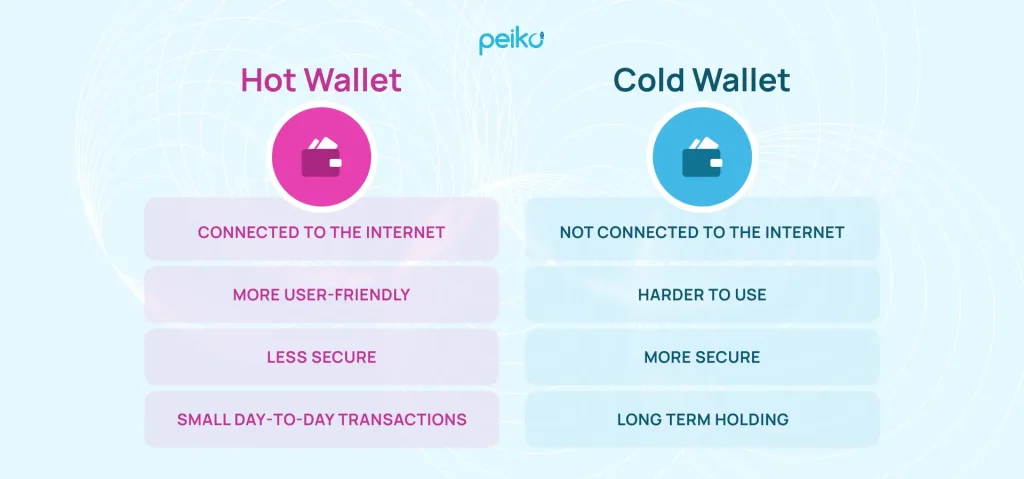
The worldwide revenue for crypto wallets is projected to exceed $3,675.4 million by 2033. This market is expected to see a compound annual growth rate (CAGR) of 9.3% from 2023 to 2033.
The importance of selecting the right wallet type cannot be overstated. This decision not only influences the security of digital assets but also shapes how users engage with the crypto ecosystem.
Cold wallet vs hot wallet
Grasping the distinctions between a hot wallet vs cold wallet is essential for anyone managing cryptocurrency storage. Each type offers unique advantages and drawbacks suited to different requirements and situations.
A cold wallet vs hot wallet prioritizes security by keeping assets offline, while hot wallets excel in convenience, allowing for quick access to funds for everyday transactions.
| Feature | Cold wallets | Hot wallets |
|---|---|---|
| Security | High. Offline cold wallet storage minimizes hacking risks | Moderate. Online connectivity makes them susceptible |
| Accessibility | Limited. Requires physical access or manual retrieval | High. Convenient for quick transactions |
| Level of control | Full control over private keys | Depens if the hot wallet custodial or non-custodial |
| Transaction speed | Slower transaction times; manual backup required | Fast transaction speeds; automatic backups usually available |
| Best use cases | Ideal for long-term asset storage and security | Suited for everyday transactions and trading |
Cold wallets vs other storage methods
If you are looking for the answer to what is cold wallet, it’s essential to differentiate between cold wallets and other storage alternatives, except hot wallets. These can be crypto exchanges and custodial services.
Cold wallets vs exchanges
Cryptocurrency exchanges provide another option for storing and trading assets. They enable users to hold their cryptocurrencies on the platform, facilitating fast transaction speeds and an intuitive user experience. However, exchanges present considerable security risks, as they are often prime targets for hackers. Users generally have limited control over their private keys since the exchange manages them.
Compared to the cold storage crypto wallet, exchanges offer less security but greater immediacy for trading activities.
Cold wallets vs crypto lending and financial services
Custodial services are suited for those who prefer to rely on a third party to manage their crypto assets. These services provide convenience and often feature automatic backup options. However, users usually have restricted control over their private keys, and the security level can vary widely based on the provider.
Similar to exchanges, lending, and financial services are less secure than cold wallets, as they require users to place trust in a third party, introducing potential vulnerabilities that a cold storage crypto wallet effectively avoids through offline storage.
As examples of lending and financial services platforms we can name Fireblocks and BlockFi. Fireblocks ensures custody and asset transfers for institutional clients, enhancing operational efficiency. BlockFi, meanwhile, allows users to earn interest on their crypto holdings and access loans using their digital assets as collateral. This flexibility provides users with opportunities to generate income and leverage their investments.
While cold wallets excel in security, lending, and financial services platforms enhance the utility of cryptocurrencies by offering innovative ways to earn and borrow.
What conclusion can we draw from analyzing the diverse methods of storing cryptocurrency? Cold wallets excel in security for long-term holdings, while hot vs cold wallets, exchanges, and crypto lending services offer accessibility and ease of use for active trading.
In the next section of our “What is a crypto cold wallet?” guide, you will discover the main types of these wallets.
Types of cold wallets
The primary types of cold wallets include hardware wallets, offline software wallets, and paper wallets. Let’s consider them in detail to understand the topic of “What’s a cold wallet?” better.
Hardware wallets
These wallets are dedicated devices designed for securely storing cryptocurrencies. They keep private keys offline, offering robust protection against hacking and malware. Well-known examples include Trezor and the cold wallet Ledger Nano S. These wallets are user-friendly, often equipped with screens for transaction confirmation, and require physical access to complete transactions, enhancing security. Hardware wallets are ideal for long-term asset cold wallet storage, as they shield funds from online threats while remaining relatively straightforward to use.
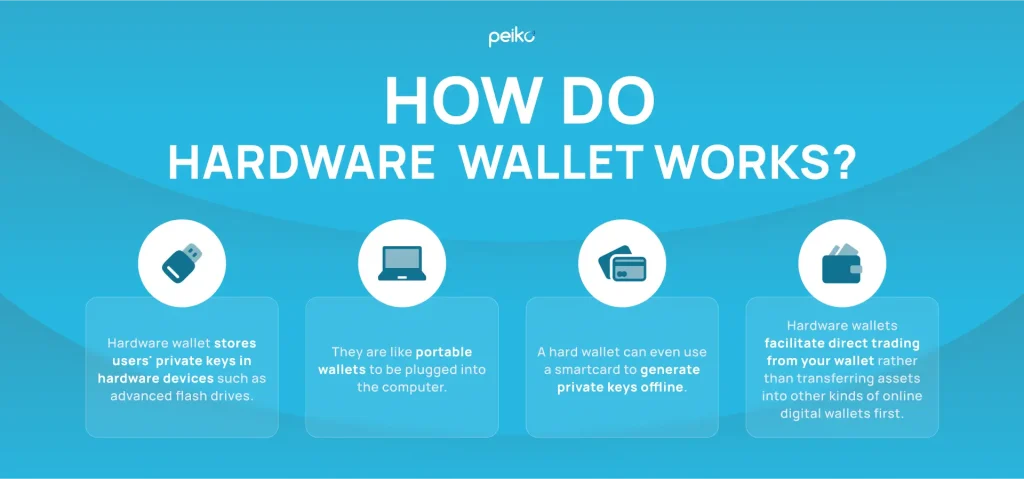
Offline software wallets
They are sometimes referred to as air-gapped wallets, which are applications installed on computers that are never connected to the internet. This method allows users to create and manage private keys in a secure offline environment, greatly reducing the risk of online attacks. Users can prepare transactions on the offline device and then transfer them to an online platform for broadcasting, typically using a USB drive.
While offline software wallets offer strong security, they may require more technical knowledge and careful handling to safeguard private keys.
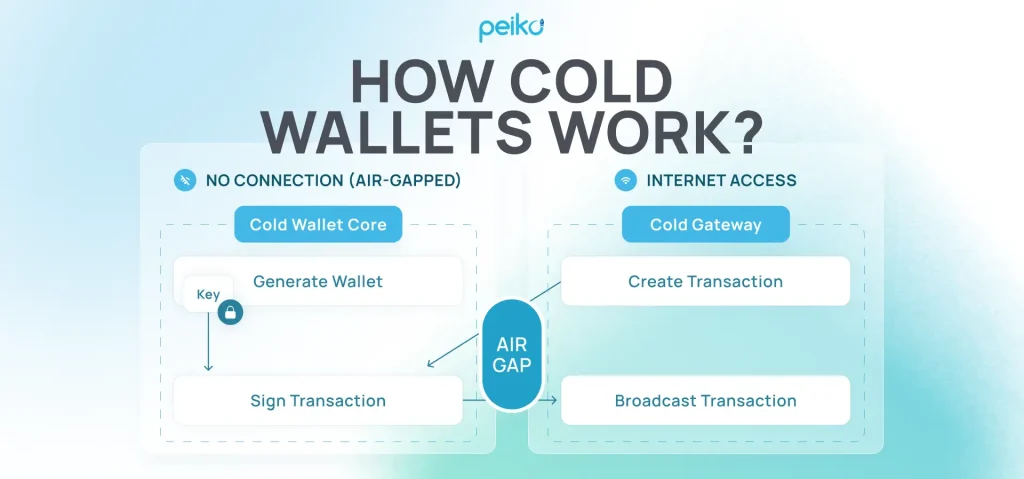
Paper wallets
The wallets represent the most basic type of cold wallet storage, where private keys and public addresses are physically printed or handwritten on paper. This method is entirely offline and provides significant protection against online threats. But paper wallets are vulnerable to loss, physical damage, or theft. To create a paper wallet securely, users should utilize a trusted generator in an offline setting to minimize risks.
Although paper wallets are a cost-effective solution for long-term storage, it’s crucial to ensure they are stored safely and protected from potential harm.
How does a cold wallet work?
To answer the question of what is a cold storage wallet, it is vital to understand the main technical mechanisms behind these wallets.
Technical explanation of offline storage
How does the best cold wallet crypto function, and what is crypto cold storage? These wallets function by staying completely offline, which protects them from internet access. This offline storage approach ensures that private keys—essential for accessing and managing cryptocurrencies—are shielded from online threats like hacking or malware. Private keys are cryptographic codes that enable users to access their cryptocurrency assets.
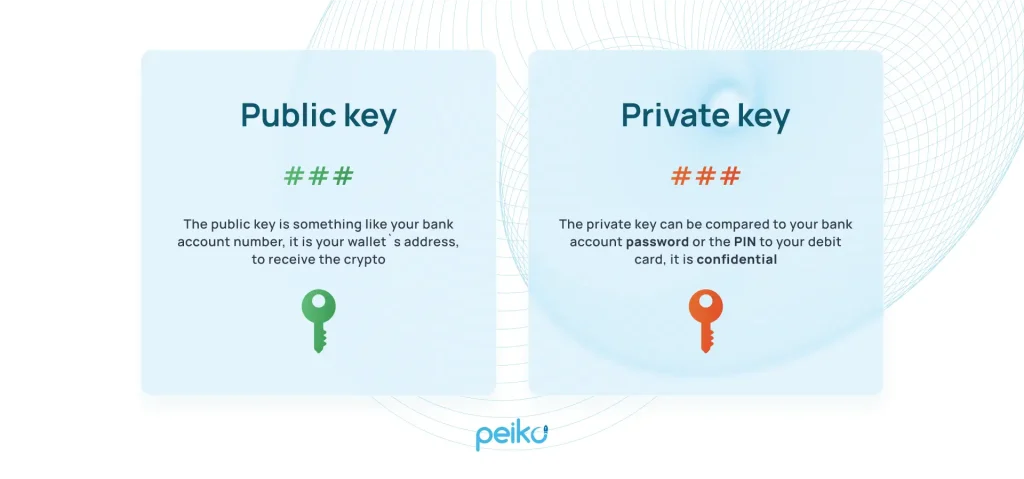
When a user aims to conduct a transaction, they typically create the transaction details on an offline device and then transfer this information to an internet-connected device for broadcasting. This transfer often utilizes USB drives or QR codes to facilitate secure interaction between the offline and online environments, ensuring the protection of private keys throughout the process.
Private key management
The right management of private keys is a fundamental aspect of cold wallets. In cold wallets, these keys are stored securely offline, often within specialized hardware or software. This arrangement ensures that even if the device is compromised when connected to the internet, the private keys remain safe. Users need to be careful when handling these keys, as losing them can lead to a complete loss of access to the linked funds.
Hardware wallets typically allow users to create secure backup copies of their keys, while offline software and paper wallets require careful handling to prevent damage or loss.
Benefits and potential drawbacks of applying a cold wallet
We have come to an interesting topic in our guide to what is a cold crypto wallet. Cold wallets have both important advantages, such as secure crypto storage, and disadvantages, such as less convenience for trading. You should be warned about both sides.
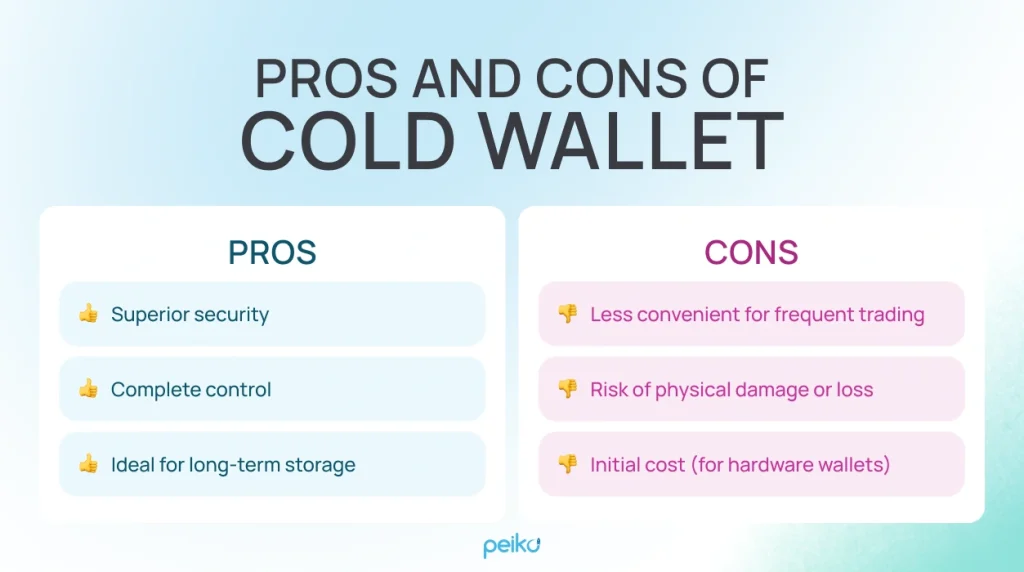
Pros of cold wallets
Opting for a cold wallet for cryptocurrency storage provides several compelling advantages for users:
Superior security
Cold wallets are offline. This greatly reduces the risk of hacking, phishing, and other online threats. By keeping private keys away from internet exposure, these wallets offer one of the safest methods for securing digital assets.
Complete control
With cold wallets, users have complete control over their private keys. This autonomy removes reliance on third-party services, guaranteeing that only users can access their funds.
Ideal for long-term storage
Cold wallets are ideal for long-term investment strategies. Their secure nature allows users to hold assets without the constant worry of online vulnerabilities, making them a good choice for those who don’t plan to trade frequently.
Cons of colds wallet
Despite their many benefits, cold wallets also come with certain drawbacks. Our guide “What is a cold wallet for crypto?” will also reveal these.
Less convenient for frequent trading
Cold wallets are not built for rapid transactions. Accessing funds requires physical retrieval or transferring data to an online device, which can slow down the trading process for those who engage in frequent transactions.
Risk of physical damage or loss
Cold wallets, particularly paper and hardware types, can be at risk of physical damage, theft, or loss. If a wallet is lost or damaged, users could permanently lose access to their crypto.
Initial cost (for hardware wallets)
Acquiring a hardware wallet involves an initial financial investment, which may deter some users. While the cost is often justified by the heightened security, it’s important for potential users to evaluate this expense against their cryptocurrency holdings and overall security needs.
How to create a cold wallet software
A cold vs hot wallet typically does not include websites or web apps in the same way that hot wallets do. Their primary function is to store private keys offline, enhancing security through isolation from the internet. As mentioned above, cold wallets generally come in forms such as hardware devices, offline software, or even paper wallets.
However, some cold wallet solutions may offer companion applications that allow users to manage their wallets and perform certain transactions. These interfaces can enable users to view balances, generate receiving addresses, or sign transactions while the essential functions—like the actual storage of private keys—remain securely offline.
If you are asking how to create a crypto wallet, we have an answer. There are a few essential steps we follow at Peiko when developing software for cold storage wallet crypto solutions.
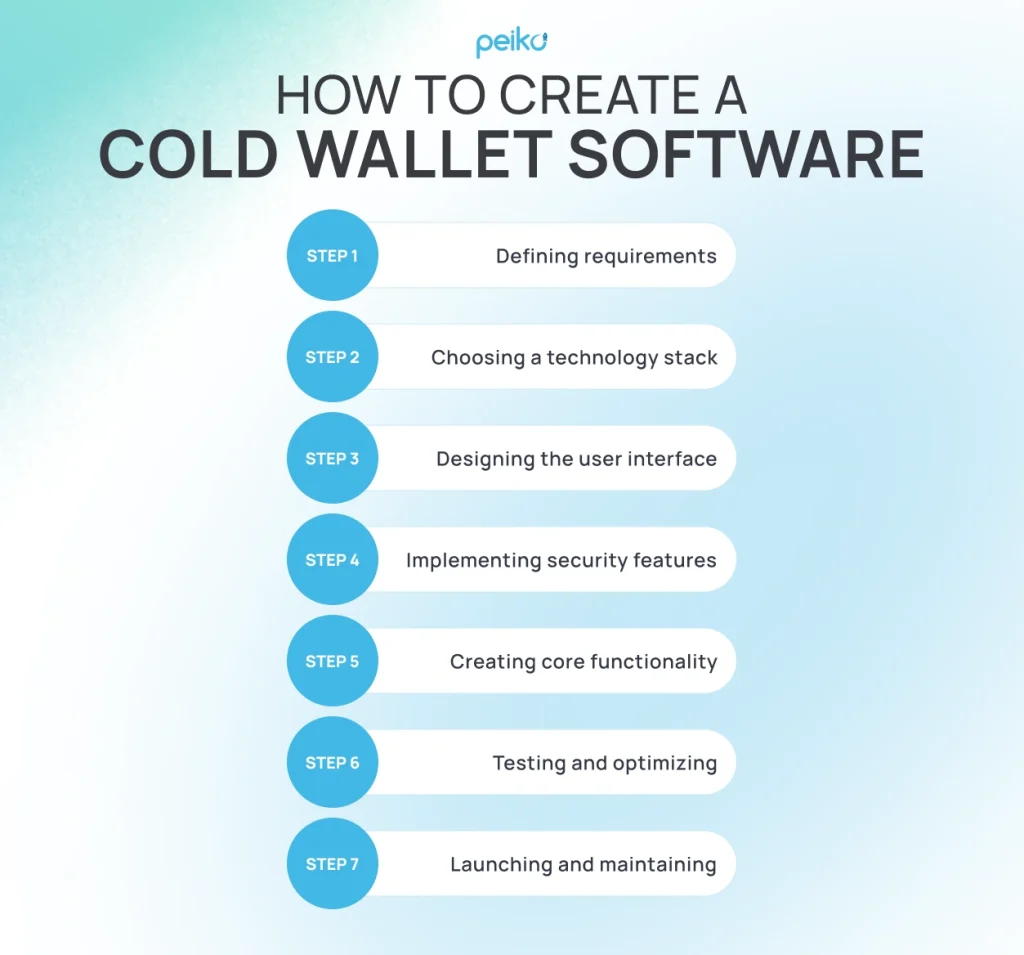
Step 1: Defining requirements
We begin by defining the specific requirements for the wallet and collaborating with stakeholders to pinpoint key features like multi-currency support, user interface preferences, and necessary security measures.
Step 2: Choosing a technology stack
Next, we select an appropriate technology stack, choosing programming languages and frameworks that align with project goals. For backend development, Node.js is often our choice due to its efficiency, while React Native allows us to deliver a consistent user experience across both iOS and Android platforms.
Step 3: Designing the user interface
During the design phase, we emphasize creating an intuitive user interface. This involves sketching wireframes and developing interactive prototypes to ensure users can navigate the wallet easily. We also conduct user experience testing to gather valuable feedback and refine the design before moving to full-scale development.
Step 4: Implementing security features
There are no high-quality cold storage wallet crypto solutions without robust security features. We employ robust security measures such as encryption, two-factor authentication, and biometric login options to protect user data and assets.
Step 5: Creating core functionality
The development of core functionalities focuses on essential features like private key management, transaction processing, and compatibility with various blockchain networks, enhancing overall user flexibility.
Step 6: Testing and optimizing
Our testing phase is thorough and aimed at identifying bugs and performance issues while optimizing the wallet for a seamless user experience. We perform functional testing, evaluate performance, and carry out user acceptance testing. This enables us to confirm that everything functions as expected.
Step 7: Launching and maintaining
Finally, once testing is complete, we prepare for the wallet’s launch. We prioritize deployment and provide continuous support. Thus, we can ensure that we address user inquiries and feedback in a timely manner.
Regular updates are scheduled to enhance features, resolve issues, and adapt to emerging security threats, ensuring the wallet remains reliable and secure.
At Peiko, we excel in developing secure and user-friendly cold wallet software tailored to your needs. Our expert team will guide you through each step, ensuring that your wallet meets industry standards for security and functionality.
Best practices for owners of cold wallet software
If you’re developing or managing crypto cold storage wallet software, we advise following the best practices to ensure both security and usability. Here are some essential recommendations:
- Focus on security: Use robust encryption for private keys and sensitive information. Employ industry-standard cryptographic methods to safeguard user data.
- Regularly update software: Consistently update your software to ensure it includes the latest security enhancements and features. Regular updates are essential for safeguarding against potential vulnerabilities and can significantly enhance overall functionality.
- Educate users: It is important to provide thorough documentation to explain to users how to use a cold wallet software. You can include tutorials and safety tips to improve their understanding.
- Integrate multi-factor authentication (MFA): Offer MFA options for added security. This additional layer requires users to confirm their identity using extra methods, like entering a code sent to their mobile device.
- Conduct vulnerability testing: Conduct security audits and penetration tests regularly to identify and resolve any potential vulnerabilities in the software. It is vital to act quickly to resolve any issues found.
- Encourage backup practices: Prompt users to create backups of their wallets and private keys. Provide clear guidance on secure methods for creating and storing backups.
- Minimize internet exposure: Design the software to limit internet connectivity during critical operations. Advise users to operate in offline environments whenever feasible.
- Create a user-friendly interface: Ensure that the software interface is easy to navigate for users and intuitive. A user-friendly design can help prevent errors that might compromise security.
- Monitor emerging threats: Stay informed about new threats and vulnerabilities in the cryptocurrency domain. Keeping up with the latest security trends allows you to adapt your software proactively.
If you’re looking for a reliable firm that develops the best crypto cold wallet software, reach out to Peiko. Our specialists are focused on crafting top-tier software that highlights the importance of both security and user experience. We can guarantee that our cold wallet solutions adhere to the highest industry standards, giving users confidence as they manage their digital assets.
Popular examples of cold wallets
When it comes to the best crypto cold wallet, several options are widely recognized for their security and user-friendliness.
Leading hardware wallet brands
Below, we have mentioned some of the most popular choices of cold storage for crypto among cryptocurrency enthusiasts.
The Ledger Nano S and Ledger Nano X
The Ledger Nano series is a leading name in the hardware wallet space. The Nano S offers a budget-friendly option, while the Nano X features Bluetooth connectivity for mobile use. Both models support a wide array of cryptocurrencies and incorporate advanced security features, including a secure chip.
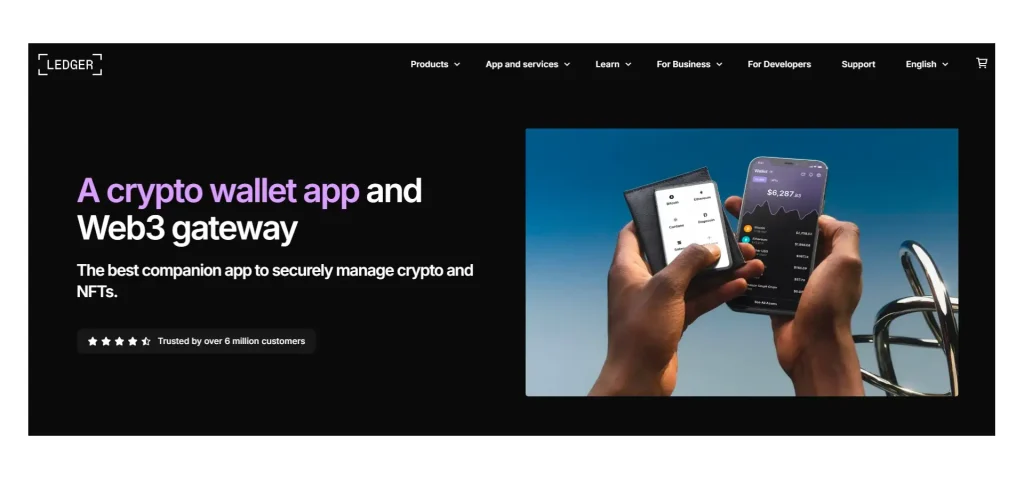
Trezor One and Trezor Model T
Trezor wallets are highly regarded for their security and ease of use. The Trezor One is the best crypto cold wallet known for its straightforward design, while the Trezor Model T boasts a touchscreen for enhanced navigation. Both models are compatible with numerous cryptocurrencies and implement strong security protocols.
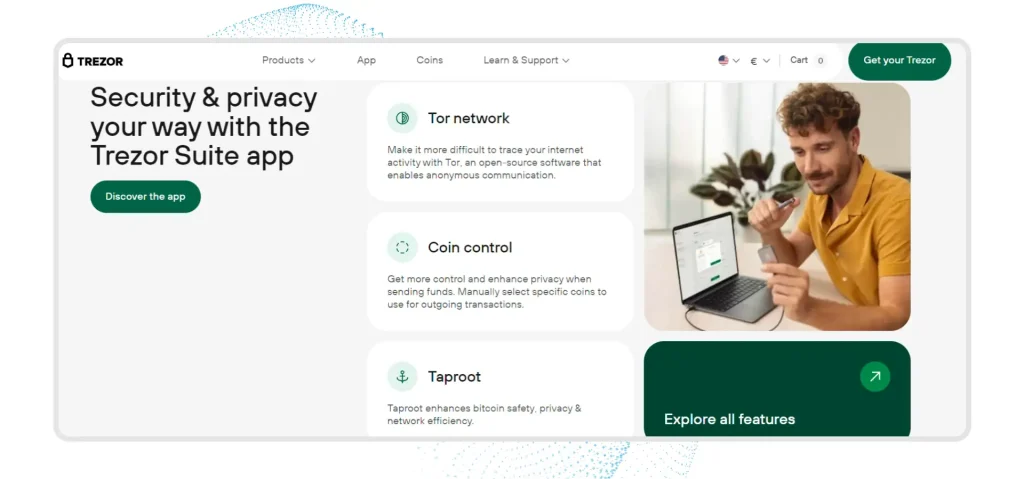
KeepKey
It stands out as a user-friendly hardware wallet with a sleek design and simple interface. KeepKey supports various cryptocurrencies and features recovery seed support, making backup easy. This wallet is recognized for its solid security measures, making it a reliable option for cold storage.

Comparison of features and security measures
For a deeper understanding of “What is cold storage wallet?”, let’s compare the features and security measures of the Ledger cold wallet Nano S, Ledger cold wallet Nano X, KeepKey, Trezor One, and Trezor Model T.
| Wallet | Features | Security measures |
|---|---|---|
| Ledger Nano S |
|
|
| Ledger Nano X |
|
|
| Trezor One |
|
|
| Trezor Model T |
|
|
| KeepKey |
|
|
Future of cold wallet technology
Whats a cold wallet crypto prediction for the coming years? The future of cold wallet technology is still promising. With the increasing adoption of digital assets, cold wallets are likely to incorporate improved security measures. These are biometric authentication and cutting-edge cryptographic techniques to bolster protection against potential threats.
User experience will also see enhancements featuring simplified setup processes and more intuitive interfaces. New developments, such as multi-signature features and increased compatibility with various platforms, will empower users to manage their assets more flexibly.
One more trend is the integration of cold wallets crypto solutions with DeFi (decentralized finance). As DeFi platforms become more popular, offering services like lending and yield farming, secure interaction methods will be essential. Cold wallets may develop features that facilitate direct connections with DeFi platforms while maintaining their offline security benefits.
We can say that the outlook for cold wallet technology is bright, with a strong emphasis on security and usability.
Peiko is your best partner for developing crypto wallets
Our company is a trusted software and blockchain development partner who will take on all your hassles of this process. We start from the complex analysis of your idea, implement the project into life, and still provide ongoing maintenance and support.
Why choose us to develop crypto wallet software? We have a solid reputation among companies developing software and blockchain solutions. For example, on a platform like Clutch or GoodFirms, you can find many positive reviews from our clients. We boast an extensive portfolio of successful projects, and you can easily familiarize yourself with them on our website. Here is just one such project.
Below, you can see an image of a cutting-edge, non-custodial cryptocurrency wallet that emphasizes both versatility and security. We crafted this innovative solution to cater to the diverse needs of cryptocurrency users, enabling seamless management of digital assets across various blockchain networks.
Key features of this wallet we built include:
- Multi-currency compatibility: Supports both Ethereum Virtual Machine (EVM) and non-EVM networks, allowing users to transact with a wide range of cryptocurrencies.
- Seamless cross-chain swaps: Facilitates easy exchanges between different blockchain networks through integrated services like Changelly, enhancing trading flexibility.
- Robust security measures: Features know your customer (KYC) and anti-money laundering (AML) compliance checks through SumSub, alongside biometric login options, ensuring secure access to user funds.
- Intuitive user interface: Underwent a comprehensive redesign based on extensive UI/UX analysis, resulting in an engaging and user-friendly experience.
- Multiple wallet management: Allows users to manage various wallets within a single account, offering added convenience for handling different assets.
- Enhanced security with scanning services: Integrated scanning services to bolster security through transaction monitoring and identity verification.
- Convenient QR code functionality: A built-in QR code generator simplifies the process of replenishing the wallet, allowing users to quickly and securely add funds by scanning codes.
By focusing on security, usability, and performance, our wallet provides an efficient and reliable solution for cryptocurrency management. You can trust Peiko completely to deliver an exceptional wallet experience tailored to your needs.
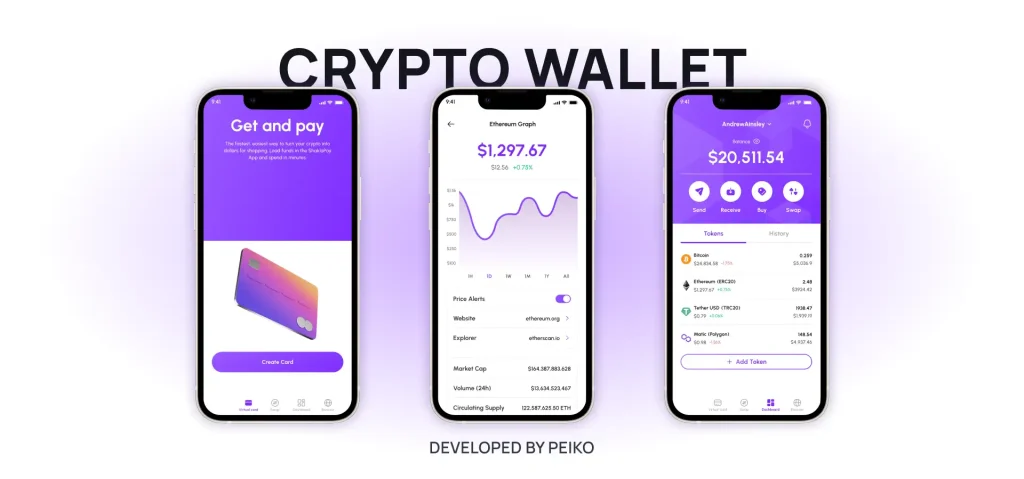
Conclusion
So, we have covered the main questions on the topic of what is cold storage crypto. In the fast-changing world of cryptocurrency, cold wallets play a vital role in the secure storage of digital assets.
With their strong security features, offline functionality, and compatibility with various networks, cold wallets provide essential protection for both individual users and businesses. We believe our guide “What is crypto cold wallet?” was useful for you to learn more about these types of wallets.
At Peiko, we pride ourselves on being leaders in crypto wallet development. Our commitment to crafting high-quality crypto wallets ensures you get a secure, intuitive, and fully-featured solution tailored to your unique requirements.
If you’re seeking a premier crypto wallet development firm, you are at the right place. Reach out to us at Peiko, and together, we’ll create a secure future for your digital assets!










